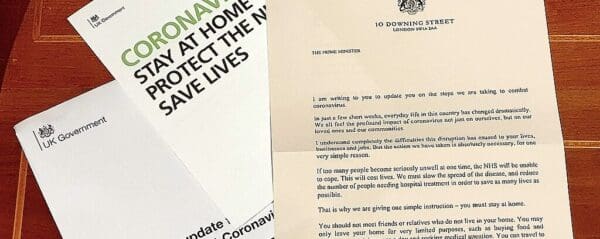Another day, another lurid, headline-grabbing number of deaths to expect from Covid-19.
This time, it was a study from the Academy of Medical Sciences. A second wave, we were warned, could kill 120,000 this winter in hospitals alone.
To be fair, this study was a projection rather than a forecast. A forecast is what is thought to be the most likely outcome. A projection looks at what could happen under a particular set of conditions.
The Academy essentially assumed that behaviour would revert to the same as it was before the crisis, with people acting as though the virus had never appeared.
The researchers made their assumptions clear. But entirely predictably, the media seized on the 120,000 figure for deaths. The qualifications made around that number faded into the background.
The plain fact is that the assumptions of the report were wholly implausible. Even if lockdown were lifted completely, behaviour is not going to immediately revert to exactly what it was before the Covid crisis. Will people shake hands? Of course not. The concept of a typical way of life has irrevocably changed.
The entire history of the world can be cited in evidence of this proposition. In the face of an epidemic, people alter their behaviour. They do not need to be told to do so by governments.
Of course, how much behaviours will change is ultimately a matter of judgement. But it is one where the social sciences, including economics, can make a valuable contribution. Epidemiology is currently too important a subject to be left in the hands of the epidemiologists.
It is something of a mystery why the numbers churned out by various epidemiologists retain any credibility. Their models in general take no account of behavioural change when a pandemic occurs.
In March, we all remember the Imperial College study claiming that without lockdown there would be 500,000 deaths in the UK. This was ludicrous — and economists such as Gerard Lyons and I quickly attacked it.
In April, a very similar model was run on Swedish data. It claimed that there would be 40,000 deaths by the beginning of July. In fact, even with no lockdown, there were only some 5,000, the majority of which took place in care homes.
Forecasts such as these make economic forecasts seem like Platonic ideals of precision.
This is far from a mere spat between scientific disciplines. Poor models and their resulting projections can lead to poor policy decisions. They generate a wholly unwarranted climate of fear among the population. This reduces economic activity, meaning less money available to fund health services, and greater poverty with its associated illnesses such as depression.
The number of deaths in England and Wales peaked on 8 April. The average time from infection to death tells us that the number of cases peaked in the week 18–25 March. Lockdown was only introduced on the evening of 23 March. This shows that behaviour had already altered dramatically.
No more credence should be given to epidemiological projections which do not assume behavioural change.


